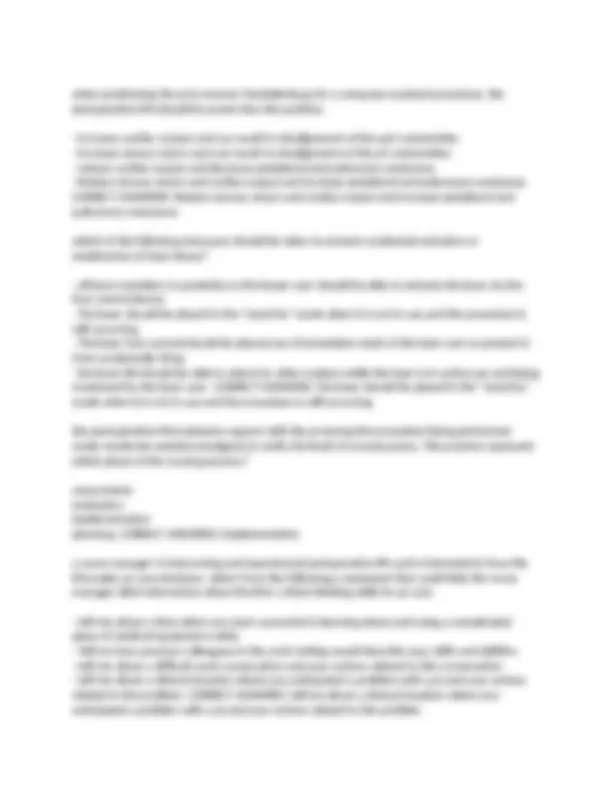





































Study with the several resources on Docsity

Earn points by helping other students or get them with a premium plan


Prepare for your exams
Study with the several resources on Docsity

Earn points to download
Earn points by helping other students or get them with a premium plan
Community
Ask the community for help and clear up your study doubts
Discover the best universities in your country according to Docsity users
Free resources
Download our free guides on studying techniques, anxiety management strategies, and thesis advice from Docsity tutors
CNOR AORN online test| 201 QUESTIONS| WITH COMPLETE SOLUTIONS| 43 PAGES/CNOR AORN online test| 201 QUESTIONS| WITH COMPLETE SOLUTIONS| 43 PAGES/CNOR AORN online test| 201 QUESTIONS| WITH COMPLETE SOLUTIONS| 43 PAGES/CNOR AORN online test| 201 QUESTIONS| WITH COMPLETE SOLUTIONS| 43 PAGES/CNOR AORN online test| 201 QUESTIONS| WITH COMPLETE SOLUTIONS| 43 PAGES
Typology: Exams
1 / 43

This page cannot be seen from the preview
Don't miss anything!




































What is the leading and most costly occupational health problem in the united states?
if a pt experiences a cardiac arrest in a hybrid OR when the magnetic resonance imaging (MRI) scanner is in use, the first action the perioperative rn should do to assist the team is
surgeon who is wearing a hood as a head cover, goggles, and a surgical mask CORRECT ANSWERS: sterile processing team member who is wearing a short-sleeved scrub top while preparing and packaging items in the clean assembly area of the sterile processing department
how often should surgical gloves are worn during invasive surgical procedures be changed during the procedure?
-cardiac arrhythmias
when positioning the pt in reverse Trendelenburg for a computer-assisted procedure, the perioperative RN should be aware that this position.
the bowie-dick test is used for which of the following?